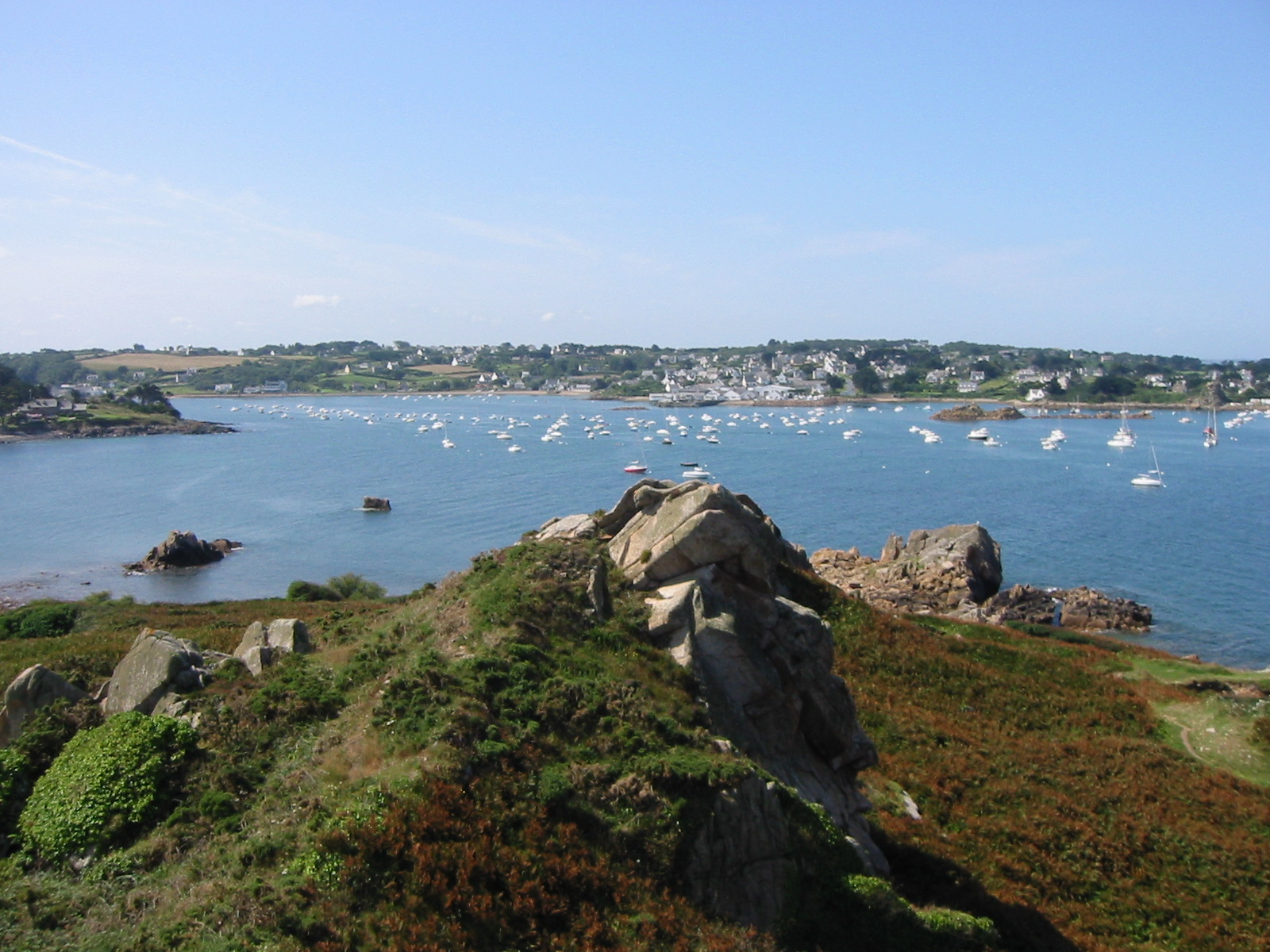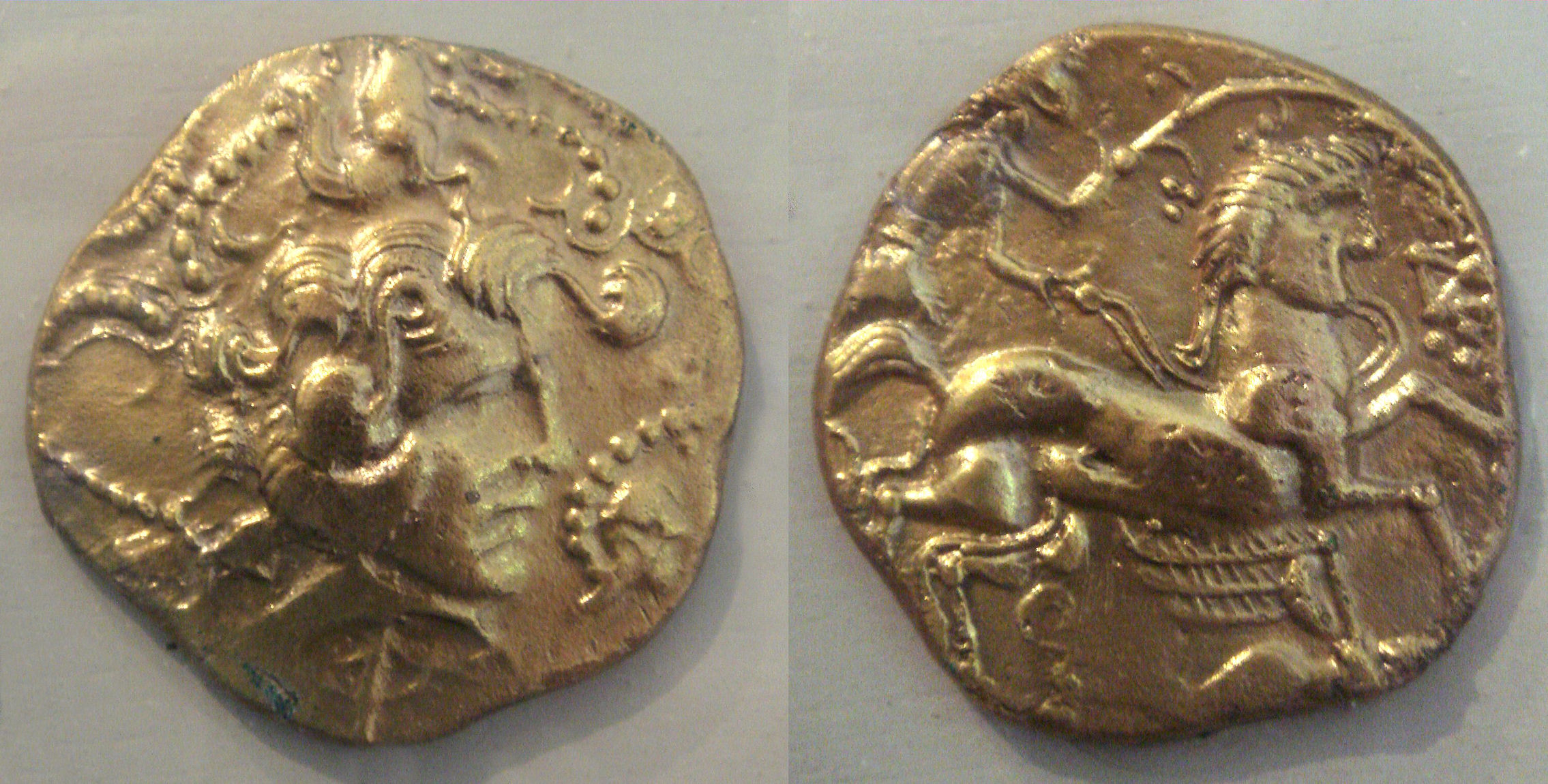|
Vannes
Vannes (; br, Gwened) is a commune in the Morbihan department in Brittany in north-western France. It was founded over 2,000 years ago. History Celtic Era The name ''Vannes'' comes from the Veneti, a seafaring Celtic people who lived in the south-western part of Armorica in Gaul before the Roman invasions. The region seems to have been involved in a cross channel trade for thousands of years, probably using hide boats and perhaps Ferriby Boats. Wheat that apparently was grown in the Middle East was part of this trade. At about 150 BC the evidence of trade (such as Gallo-Belgic coins) with the Thames estuary area of Great Britain dramatically increased. Roman Era The Veneti were defeated by Julius Caesar's fleet in 56 BC in front of Locmariaquer; many of the Veneti were then either slaughtered or sold into slavery. The Romans settled a town called Darioritum in a location previously belonging to the Veneti. The Britons arrive From the 5th to the 7th century, the ... [...More Info...] [...Related Items...] OR: [Wikipedia] [Google] [Baidu] |
Roman Catholic Diocese Of Vannes
The Roman Catholic Diocese of Vannes (Latin: ''Dioecesis Venetensis''; French: ''Diocèse de Vannes'') is a diocese of the Latin Rite of the Roman Catholic Church in France. Erected in the 5th century, the Episcopal see is Vannes Cathedral in the city of Vannes. The diocese corresponds to the department of Morbihan, and is suffragan to the Archdiocese of Rennes, Dol, and Saint-Malo. Raymond Michel René Centène is the current bishop since his appointment in 2005. History In 1801, the diocese was expanded after the Concordat of 1802, to include part of the ancient Diocese of Saint-Malo, which was subsequently suppressed, after a three way split among the Dioceses of Vannes and Saint-Brieuc and the Archdiocese of Rennes. In fiction Alexandre Dumas makes Aramis the local Ordinary of the Diocese of Vannes in '' The Vicomte of Bragelonne: Ten Years Later'', the last book of his d'Artagnan Romances. Bishops of Vannes to 1600 *Amaury de la Motte d'Acigné † (1409 Appointed � ... [...More Info...] [...Related Items...] OR: [Wikipedia] [Google] [Baidu] |
Golfe Du Morbihan - Vannes Agglomération
Golfe du Morbihan - Vannes Agglomération is the ''communauté d'agglomération'', an intercommunal structure, centred on the city of Vannes. It is located in the Morbihan department, in the Brittany region, northwestern France. It was created in January 2017 by the merger of the former Communauté d'agglomération Vannes Agglo with the former communautés de communes Loc'h Communauté and Presqu'île de Rhuys. 26 August 2016, p 51 Its area is 807.4 km2. Its population was 169,785 in 2018, of which 53,438 in Vannes proper.Comparateur de territoire I ... [...More Info...] [...Related Items...] OR: [Wikipedia] [Google] [Baidu] |
Bro-Ereg
Gwened, Bro-Gwened (Standard br, Bro-Wened) or Vannetais (french: Pays Vannetais) is a historic realm and county of Brittany in France. It is considered part of Lower Brittany."AM""Gwened (Vannes/Vannetais)" in ''Celtic Culture: A Historical Encyclopedia'', Vol. I, p. 860 ABC-CLIO ( Sta. Barbara), 2006. Bro-Gwened was an early medieval principality or kingdom around Vannes in Armorica (Brittany), lasting from around AD 490 to around 635. It was peopled by Christianized Britons fleeing the Saxon invasions of Britain, who displaced or assimilated the remaining pagan Veneti Gauls. Its bishop and (usually) court was at Gwened, the site of the former Roman settlement of Darioritum and the present French city of Vannes. Today its territories are included within the modern French department of Morbihan. Name The Breton placename-element ' ( la, plebs) initially meant a tribe, but came to signify its territory as well. The standard Breton form of the name mutates ... [...More Info...] [...Related Items...] OR: [Wikipedia] [Google] [Baidu] |
Breton Language
Breton (, ; or in Morbihan) is a Southwestern Brittonic language of the Celtic language family spoken in Brittany, part of modern-day France. It is the only Celtic language still widely in use on the European mainland, albeit as a member of the insular branch instead of the continental grouping. Breton was brought from Great Britain to Armorica (the ancient name for the coastal region that includes the Brittany peninsula) by migrating Britons during the Early Middle Ages, making it an Insular Celtic language. Breton is most closely related to Cornish, another Southwestern Brittonic language. Welsh and the extinct Cumbric, both Western Brittonic languages, are more distantly related. Having declined from more than one million speakers around 1950 to about 200,000 in the first decade of the 21st century, Breton is classified as "severely endangered" by the UNESCO '' Atlas of the World's Languages in Danger''. However, the number of children attending bilingual classes rose 33 ... [...More Info...] [...Related Items...] OR: [Wikipedia] [Google] [Baidu] |
Bro-Wened
Gwened, Bro-Gwened (Standard br, Bro-Wened) or Vannetais (french: Pays Vannetais) is a historic realm and county of Brittany in France. It is considered part of Lower Brittany."AM""Gwened (Vannes/Vannetais)" in ''Celtic Culture: A Historical Encyclopedia'', Vol. I, p. 860 ABC-CLIO ( Sta. Barbara), 2006. Bro-Gwened was an early medieval principality or kingdom around Vannes in Armorica (Brittany), lasting from around AD 490 to around 635. It was peopled by Christianized Britons fleeing the Saxon invasions of Britain, who displaced or assimilated the remaining pagan Veneti Gauls. Its bishop and (usually) court was at Gwened, the site of the former Roman settlement of Darioritum and the present French city of Vannes. Today its territories are included within the modern French department of Morbihan. Name The Breton placename-element ' ( la, plebs) initially meant a tribe, but came to signify its territory as well. The standard Breton form of the name mutates ... [...More Info...] [...Related Items...] OR: [Wikipedia] [Google] [Baidu] |
Brittany (administrative Region)
Brittany (french: Bretagne ; br, Breizh ); Gallo: ''Bertaèyn'' ) is the westernmost region of Metropolitan France. It covers about four fifths of the territory of the historic province of Brittany. Its capital is Rennes. It is one of the two Regions in Metropolitan France that does not contain any landlocked departments, the other being Corsica. Brittany is a peninsular region bordered by the English Channel to the north and the Bay of Biscay to the south, and its neighboring regions are Normandy to the northeast and Pays de la Loire to the southeast. " Bro Gozh ma Zadoù" is the anthem of Brittany. It is sung to the same tune as that of the national anthem of Wales, "Hen Wlad Fy Nhadau", and has similar words. As a region of France, Brittany has a Regional Council, which was most recently elected in 2021. Territory The region of Brittany was created in 1941 from four of the five departments constituting the territory of traditional Brittany. The other is Loire-A ... [...More Info...] [...Related Items...] OR: [Wikipedia] [Google] [Baidu] |
Morbihan
Morbihan ( , ; br, Mor-Bihan ) is a department in the administrative region of Brittany, situated in the northwest of France. It is named after the Morbihan (''small sea'' in Breton), the enclosed sea that is the principal feature of the coastline. It had a population of 759,684 in 2019.Populations légales 2019: 56 Morbihan INSEE It is noted for its Carnac stones, which predate and are more extensive than the monument in , England. Three major military educ ... [...More Info...] [...Related Items...] OR: [Wikipedia] [Google] [Baidu] |
Waroch I
Waroch I ( br, Gwereg; modern french: Guérech; ) was an early ruler of the Bro Wened (Vannetais) in southern Brittany. It is unclear whether he or his grandson Waroch II is the namesake of the region. Life Waroch controlled the hinterland of the region formerly held by the Veneti Gauls, without actually gaining control of Darioritum itself. The settlement became a Gallo-Frankish enclave before later being conquered as the Breton city Gwened. It forms the core of Vannes in modern France. He seems to have been granted the formal title of "count". According to some authors, the name Waroch I and the other names with which he's historically known are eponymous of Bro-erec. After the early twenty years of 6th century, during which he consolidated his control on a large part of Gallic areas, Waroch/Gwereg could conquer large parts of low Loire, until Nantes. A lot of courtesy romance spoke of Waroch I's ''gesta'' making confusion with the legendary character of Erec by Chrétien ... [...More Info...] [...Related Items...] OR: [Wikipedia] [Google] [Baidu] |
Canton Of Vannes-1
The canton of Vannes-1 is an administrative division of the Morbihan department, northwestern France. It was created at the French canton reorganisation which came into effect in March 2015. Its seat is in Vannes. It consists of the following communes: #Vannes Vannes (; br, Gwened) is a commune in the Morbihan department in Brittany in north-western France. It was founded over 2,000 years ago. History Celtic Era The name ''Vannes'' comes from the Veneti, a seafaring Celtic people who lived ... (partly) References Cantons of Morbihan {{Morbihan-geo-stub ... [...More Info...] [...Related Items...] OR: [Wikipedia] [Google] [Baidu] |
Canton Of Vannes-2
The canton of Vannes-2 is an administrative division of the Morbihan department, northwestern France. It was created at the French canton reorganisation which came into effect in March 2015. Its seat is in Vannes. It consists of the following communes: #Arradon #Baden #Bono #Île-aux-Moines #Île-d'Arz #Larmor-Baden #Plescop #Ploeren #Plougoumelen #Vannes Vannes (; br, Gwened) is a commune in the Morbihan department in Brittany in north-western France. It was founded over 2,000 years ago. History Celtic Era The name ''Vannes'' comes from the Veneti, a seafaring Celtic people who lived ... (partly) References Cantons of Morbihan {{Morbihan-geo-stub ... [...More Info...] [...Related Items...] OR: [Wikipedia] [Google] [Baidu] |
Canton Of Vannes-3
The canton of Vannes-3 is an administrative division of the Morbihan department, northwestern France. It was created at the French canton reorganisation which came into effect in March 2015. Its seat is in Vannes. It consists of the following communes: # Meucon #Monterblanc # Saint-Avé # Saint-Nolff # Treffléan #Vannes Vannes (; br, Gwened) is a commune in the Morbihan department in Brittany in north-western France. It was founded over 2,000 years ago. History Celtic Era The name ''Vannes'' comes from the Veneti, a seafaring Celtic people who lived ... (partly) References Cantons of Morbihan {{Morbihan-geo-stub ... [...More Info...] [...Related Items...] OR: [Wikipedia] [Google] [Baidu] |
Veneti (Gaul)
The Venetī (, Gaulish language, Gaulish: ''Uenetoi'') were a Gauls, Gallic tribe dwelling in Armorica, in the northern part of the Brittany Peninsula, during the La Tène culture, Iron Age and the Roman period. A seafaring people, the Veneti strongly influenced southwestern Celtic Britons, Brittonic culture through trading relations with Great Britain. After they were defeated by Decimus Junius Brutus Albinus, Junius Brutus Albinus in a naval battle in 56 BC, their maritime commerce eventually declined under the Roman Empire, but a prosperous agricultural life is indicated by archaeological evidence. Name They are mentioned as ''Venetos'' by Julius Caesar, Caesar (mid-1st c. BC), Livy (late 1st c. BC) and Pliny the Elder, Pliny (1st c. AD), ''Ouénetoi'' (Οὐένετοι) by Strabo (early 1st c. AD) and Ptolemy (2nd c. AD), ''Veneti'' on the ''Tabula Peutingeriana'' (5th c. AD), and as ''Benetis'' in the ''Notitia Dignitatum'' (5th c. AD). The ethnonym ''Venetī'' is a la ... [...More Info...] [...Related Items...] OR: [Wikipedia] [Google] [Baidu] |





